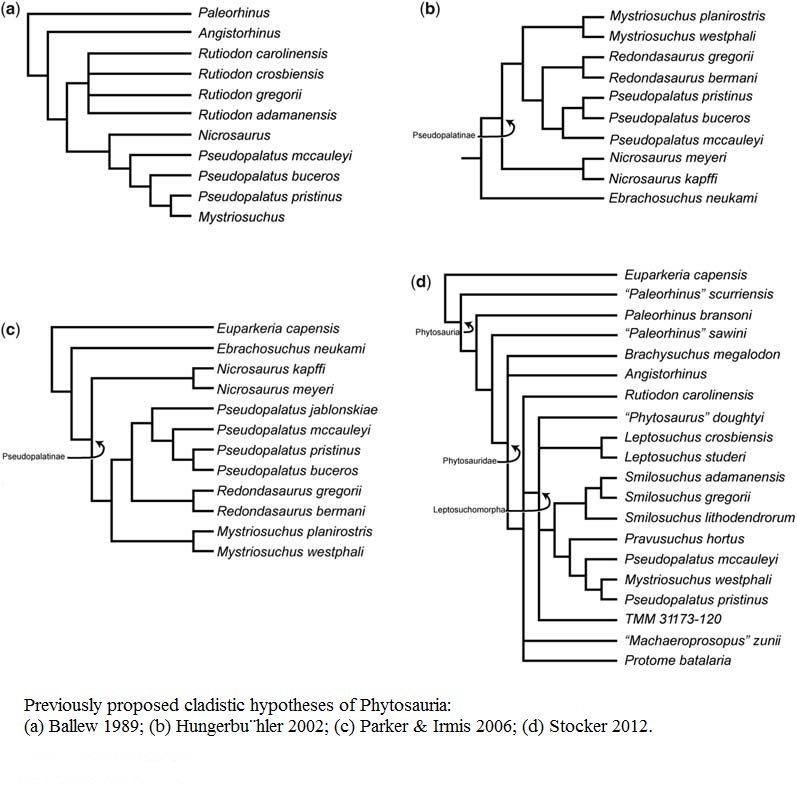
Classification
Kingdom: Animalia (multi-cellular eukaryote)
Phylum:
Chordata
Superclass:
Tetrapoda
Class:
Reptilia
some suborbital fenestra present)
Class:
Sauropsida
Clade:
Crurotarsi
Clade:
Archosauria
Order:
Phytosauria
Family:
Phytosauridae
Clade:
Phytosaurs
Genus: Smilosuchus (rostrem with marked crest)
-
Classification source: (Palaeos, 2013).
- The name Phytosaur comes from the Latin roots phyto- meaning "plant" and -saur meaning "lizard", a confusing name since they were carnivorous.
Attempting to research the proper classification of any one species has been quite the tast with many paleobiologists dissagreeing with eachother as to classification terminology and proper names of species and groups. Phytosaurs are a clade of the family Phytosauridae, of the order Phytosauria, belonging to the clade of Archosaurs, which include modern crocodiles and birds (Stocker, 2010). According to Stocker and Butler, 2013, there are at least 30 different species of phytosaurs with significant incongruities as to the composition of the clade that dominates the history of research on phytosaurs (Stocker and Butler, 2013; Paleos, 2013). The differing opinion as to the classification of species within the clade was made very apparent by Stocker and Butler, 2013, with several different widely accepted cladograms compared in their publication. This confusion as to the classification of species makes any definitive research on one particular species, or even genus, very difficult. The genus Smilosuchus, for example, is also published as Rutiodon. Much of the confusion is likely due to the absence of complete skeletons found in fossilized remains.
 (Stocker,
2012).
(Stocker,
2012).